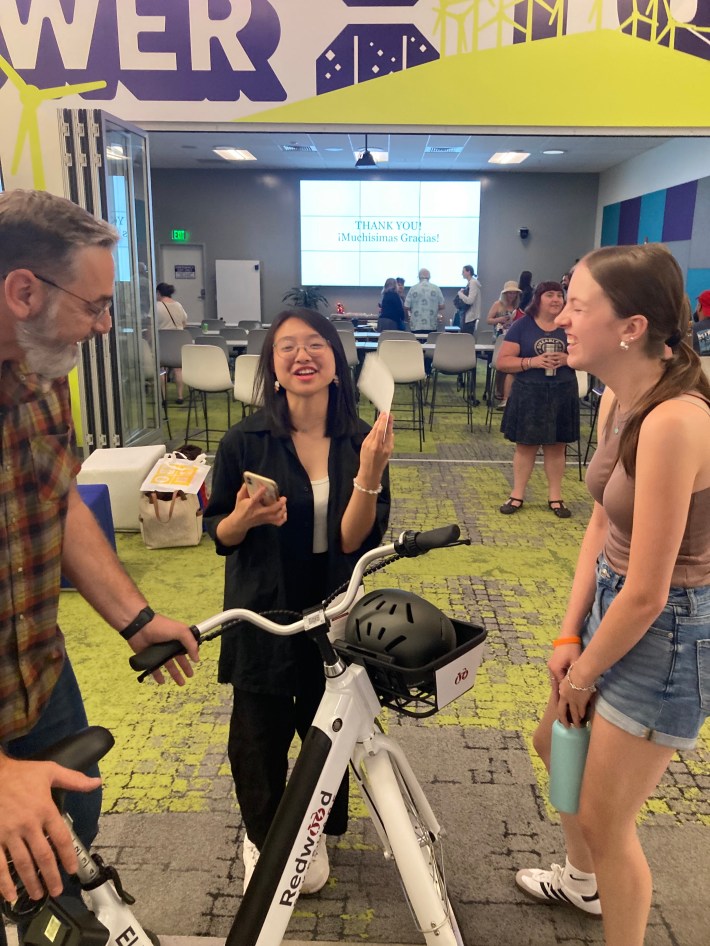Our old friend and Santa Monica native Abby Arnold took part in a Week Without Driving. You can read her preview here, follow her E-Trike journey here, discover what she discovered on two feet here, ride with her into San Francisco on a SMART Train/Ferry trip, or take a trip on the Santa Rosa City Bus. She also shared her personal thoughts on the week here.
At the end of the Week Without Driving in Sonoma County we held a community meeting to share our experiences and dream big about the future of alternatives to driving in our community.
Sonoma Clean Power hosted the meeting at their lovely service center, which is set up for refreshments, childcare, tabling, and presentations. Fifty-five people attended the afternoon meeting. It was over 100 degrees outside, and we were all glad to be in a nice cool place. Other sponsors and participating agencies included Santa Rosa City Bus, Bikeable Santa Rosa, Active Santa Rosa, SMART Train, Sonoma County Transportation Authority, and the Regional Climate Protection Authority. Raffle prizes were donated by Bikeable, Petaluma Motor Wheel, and Redwood Bikeshare.

Representatives from all the transit agencies were present with materials and handouts. Most important, they were all eager to listen to our suggestions and our dreams.
After breaking into small groups to share our experiences and then “dream big”, the reporting session produced some powerful themes:
Transit is not just for work trips. Buses and trains stop running early in the evening, especially on weekends. People would like to be able to use public transportation to get home safely from nightlife in Sonoma and Marin counties, especially on weekends. Buses are also concentrated along commercial and residential areas, making it difficult to get to the county’s abundant hiking trails, campgrounds, and beaches at the coast. While transportation planners traditionally see transit as getting people to and from work, the large number of county residents who work remotely, and the large number of seniors, should open transit planning beyond 8 to 5 on weekdays.

Free fares will boost ridership. One participant noted that public transportation should be either faster or cheaper than using a car. A current pilot program makes the SMART train free for people under 18 and over 65, and that pilot program should be extended and made permanent. Consideration should be given to eliminating the fare system entirely. City and county general funds pay for road maintenance; why not give non-drivers their fair share of public dollars?
Boost opportunities for social connection. Narrow sidewalks and single lane bike paths make walking and biking a solo activity. Biking can be social with infrastructure that allows bike riders to ride next to each other, and expanded sidewalks can accommodate two parents with strollers, two dog walkers, or other multiple groups. Social connection is a nationally-recognized problem that can be partially solved with active transportation infrastructure.
Coordination is better for everyone. The examples I observed of duplications and gaps in service are too many to list here. One example: the Santa Rosa Transit Mall is a half-mile walk from the SMART train station. Coordination should be emphasized and consolidation should be considered.
***************************************Thank you for following a Week Without Driving on Streetsblog California. I hope you’ll consider joining us next year to experience the world of non-driving, and discover your community without using a car. Here’s the national link: https://weekwithoutdriving.org/.
